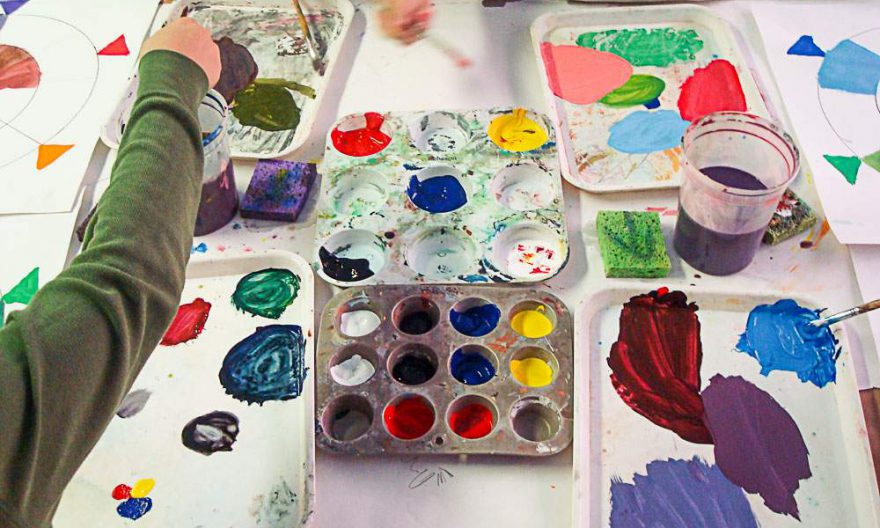
COMPILED BY STAFF REPORTER
Art is a highly diverse range of human activities that is expressed in creating visual, auditory, or performed artifacts— artworks—and portrays the author’s imaginative or technical skill and are intended to be appreciated for their beauty or emotional power.
Ethiopia, as an ancient nation and one of the most culturally diverse countries, enjoys well-developed traditions in music and dance, iconography, manuscript illumination, calligraphy, book arts, weaving, embroidery, metal work, wood carving, basketry, and many other art forms.
This is manifested and reflected in almost all of its historic, cultural and religious treasuries of the country and the day to day activities of its people. For instance, the interiors of many surviving historic churches that are completely covered with large mural icons and images on canvas are the best showcases. Not only that, but the
carved wooden and metal crosses, wooden diptychs and triptychs as well as images that are painted on goat skin, sometimes with strips of fur still on the back all testify this reality.
Favorite subjects include a wide variety of incidents from the lives of Mary and Jesus. Mary and the Christ Child are typically shown flanked by angels. The Flight into Egypt is an especially beloved subject, as a reminder that Africa sheltered the Holy Family from the threat of persecution in Israel.
Saint George, the national patron saint, is extremely popular and frequently depicted, rescuing a princess from the dragon who represents evil. George is considered the special friend and messenger of Mary, so their icons are frequently positioned to face one another.
As studies indicate, church paintings in Ethiopia were likely produced as far back as the introduction of Christianity in the 4th century. A study conducted by Association of Women in Boldness (AWiB ) suggested that Ethiopian paintings in manuscripts, on walls, and on icons are very unique but also have a touch of influence from the simplified Coptic versions of the Byzantine and Late Antique Christian arts. The simplistic style belies a vivid portrayal of the subject that is mostly religious in nature. Cartoonish figures with large oval-shaped eyes and bright colors are characteristics of paintings from this time period.
By the 16th century, the Roman Catholic Church and its art seem to have influenced Ethiopian paintings. Despite the influence, the art has managed to stay conservative and retain the majority of its unique styles. Before the 19th century, churches were fully painted, but non-religious scenes or characters not included.
Colors are usually bright and vivid. The majority of paintings are religious in nature, often decorating church walls and bibles. One of the best known examples of this type of painting is at Debre Berhan Selassie in Gondar, famed for its angel-covered roof (angels in Ethiopian art are often represented as winged heads) as well as its other murals dating from the late 17th century. Diptychs and triptychs are also commonly painted with religious icons.
However, Ethiopian art is highly conservative and retained much of its distinct character until modern times. The production of illuminated manuscripts for use continued up to the present day. Pilgrimages to Jerusalem, where there has long been an Ethiopian clerical presence, also allowed some contact with a wider range of Orthodox art.
However, as to the research, the beginning of the 20th century brought forth a new kind of artistic representation. The forerunners for this new art were the church-trained dissident painters and other self-taught artists who received some commission for their work. These artists, along with those who got their art education in Ethiopia and Europe in the 1920s and 1930s, brought about a new practice in the visual arts culture in modern Ethiopia.
By the 1940s, this new class of painters were being hired by the government and recognized as professionals. And by the 1950s, the number of painters—those coming from abroad with a new artistic style—grew steadily. The graduates of the Addis Ababa Fine Art School followed this in the 1960s, focusing on the three main artistic trends—nationalism, spirituality and expressionism—that coexisted until the overthrow of the emperor in 1974.
In 1977, when the country mobilized its professionals for a new cause, the newly amended Ethiopian Artists Association organized a show at the Addis Ababa City Hall Gallery. It was intended to be the annual exhibition of the Ethiopian Artists Association. It was also to show the solidarity of Ethiopian artists with the “Ethiopia First” slogan of the Derg. There was no indication at the show of a new style or artistic expression per se. The paintings and sculptures displayed portrayed basically the same subject matter as before, and were produced by the same artists.
Soon after, the revolution changed its course and the military government of socialist Ethiopia systematically recruited and trained artists for propaganda and other political purposes. The militants who believed that art would help advance the cause of educating the masses advocated for Socialist Realism, an artistic language that would simplify the complexity of the country and its people. This new artistic style dominated the artistic scene of the country in the 1980s.
Today, the artistic practices of the late 1970s and 1980s seem to have all but disappeared. However, since the new generations of artists are influenced by the country’s tumultuous past, doubts linger as to what to do and how to define it.
The Ethiopian Herald 13 April 2021


